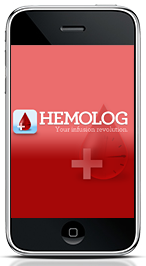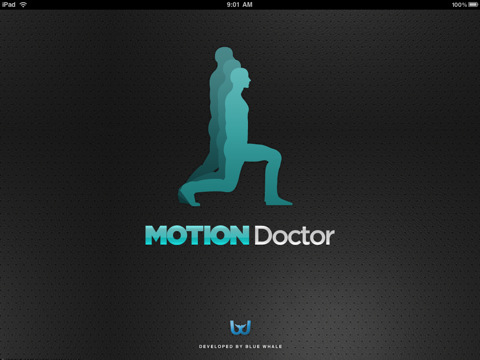Methods of Teaching and Learning of the Elderly: Care in Rehabilitation
by Jeanette Centeno R.N.
Kessler Institute for Rehabilitation
Abstract
The primary focus of Kessler Institute for Rehabilitation (KIR) is to ensure quality of life achieved through patient care and education. Institutionally acquired education for elderly patients is now easier through the use of computers and applications. Patient preference to learning and learning styles are also considered.
Key Words: education, rehabilitation, computers, applications, nursing informatics.
Kessler Konnection
Nursing Informatics is taking patient care to new levels. The Kessler Institute for Rehabilitation prides itself for quality care, sound education, providing comprehensive information for patients and families, and innovative rehabilitative techniques that provide the best possible outcome. The collaborative approach used enhances patient care by including patients and their families in their discharge plan. Ideally, this provides greater patient satisfaction, patient compliance, safer discharges, and better follow-up care.
The Kessler Healthcare Management System (HMS) system provides staff with a database to access patients’ charts, medication lists, audits, and monitoring. The intra-computer system includes programs to aid staff in supplying information, illustrating documentation, maximizing quality care, and minimizing human error. Furthermore, it can provide the clinical data required for evidence-based practice, which is critical in research and in ensuring quality patient care. At Kessler Institute for Rehabilitation, management analyzes findings in the literature and adjust the systems of care accordingly, aiming to provide safety, institute teaching techniques for staff, and provide a stepping stone for better care.
Secondly, the nurses utilize the Data Logic scan to ensure patient safety when giving medications. The medication system is integrated within the HMS and tracks errors, time, missed doses, near misses, and discontinued medications. The system works by scanning the patient identification band which prompts the loading of his/her health record screen for a current medication list. According to health statistics, there are about 7,000 deaths a year due to medication errors alone. Furthermore, hospitals spend millions in law suits and prevention programs due to error. The bar coding system prevents human error by ensuring the right drug and dosage is given to the right patient.
Another function of the HMS is an application that provides a dynamic way to guide patient teaching and learning. This system can provide the elderly with boundless information that is essential to follow-up care. The interdisciplinary team initiates a plan of care that is followed by the patient and family. The patient is taught about their medication regimen, dosages, side-effects, and alternatives. The nurses also teach the patients and families about self-care, monitoring trends, and seeking outside information as necessary.
Elderly Education
It is critical that the staff carefully assess the educational needs of their elderly patients and their families. Special considerations are taken if the patient has a physical disability, language barrier, or learning disability. All patients deserve the right to be informed and have their learning needs met, and should be individually guided towards positive and healthy outcomes.
Educational styles vary and patients may not be receptive to all teaching methods. The elderly may have immediate reactions to their environment: to noise levels, room temperature, and educational preferences should be accommodated. At Kessler Institute, our patients have 1:1 socialization with staff who are well versed in their diagnosis and needs. Furthermore, patients are provided with handouts, given demonstrations, have educational symposiums, and are taught to be autonomous in their care.
Since technology is always evolving and the needs of our patients continue to be dynamic, we must change the way information and education is provided. The elderly can benefit greatly from technology that is easy to master. It provides alternatives that may not have been previously present and opportunities to learn, teach, and communicate.
The Future of Patient Education
Patient care and education will continue to evolve and most institutions will need to keep up with technology to assure quality patient care. Our patients suffer from many debilitating physical ailments ranging from stroke, spinal cord injuries, and multiple sclerosis just to name a few. Unique computer applications (Apps) and touch-tone screens both show promise in providing more patient autonomy when using technology.
The Chief Technology Officer at Blue Whale Apps, Andy Averbuch, has designed applications that meet the needs of such patients. For instance, the release of Motion Doctor for iPad provides information in the form of 60 high quality videos. The instructional videos are categorized by body part and activity. Applications designed by Blue Whale Apps are beginning to serve the needs of a population that may or may not have proper follow-up care and may provide an essential link for many seeking easy to access and understand information.
The Motion Doctor physical therapy app is a powerful, easy to use reference and teaching tool for anyone who wants to prevent painful syndromes from developing. Created by Dr. Desirea D. Caucci, PT, DPT for the general public, Physical Therapists and their patients, Motion Doctor for iPad includes over 60 high quality videos with narrative and written text instructions, along with rationales for each exercise.
Smart phone and iPad applications have proven to be essential and can be a tremendous aid in patient education. Unfortunately, not all Apps are created equal thus physicians, nurses and the rest of the care team should guide patients and families in choosing the right one for them. For instance, Blue Whale Apps has a reputation for working with the best professionals in various fields to provide high quality products which include Hemalog App, Night Reader, and Discovery Channel’s Hydrator.
Discovery Channel Hydrator
This handy utility will tell you how hydrated your body is when you enter in the amount of water you drank, and displays on a chart. Read facts about the importance of staying hydrated.
Hemolog is an infusion logging app for people affected by Hemophilia. it allows you to log your infusions as well as email them to your doctor, caregiver or to yourself for your records.
 It is predicted that the evolution of KIR will include faster inter/intranet systems including smart phones and iPads and compatible Apps to serve each specialty care area. The sky is the limit and Kessler Institute will continue their mission to provide the best care for its patients using these emerging technologies. The same level and expertise will distinguish them and truly set them apart as this evolution unfolds.
It is predicted that the evolution of KIR will include faster inter/intranet systems including smart phones and iPads and compatible Apps to serve each specialty care area. The sky is the limit and Kessler Institute will continue their mission to provide the best care for its patients using these emerging technologies. The same level and expertise will distinguish them and truly set them apart as this evolution unfolds.
Furthermore, advances in technology have allowed a growth in ergonomic designs, which assist many patients with physical limitations. Some specialty designs include, large keys, voice recognition, instant message systems, specialty on/off switches, and specially designed chairs.
Information for assistive devices can be attained from a number of websites including http://www.wapd.org/ or http://www.abledata.com/ Discharged patients are provided with many resources, information and links from government agencies and associations, such as, the National Spinal Cord Injury Association – http://www.spinalcord.org/ or the National Alliance for Caregiving – http://www.caregiving.org/. Resources related to home response systems, pharmaceutical assistance, and recreation are given and if possible, are set-up before discharge or left to the family to research, if they prefer. What’s important to remember is that there are options and nurses are in the front line in supporting these options.
Conclusion
Care for the elderly will continue to be a challenge, costly, and dynamic. Education and information are essential keys to a successful discharge and follow-up care. Nursing informatics, technology, and the use of applications will continue to highlight patient education and follow-up. Most importantly, these practical tools will aid in quality nursing care and change how health professionals interact with patients. It’s just a matter of embracing the future and all it has to offer!
BIOGRAPHICAL STATEMENT
Jeanette Centeno R.N.
Jeanette a nurse at Kessler Institute for Rehabilitation in New Jersey and currently works in the Spinal Cord Unit. This facility is well known for its innovative rehab and nursing care.
EDITOR
June Kaminski
CITATION
Centeno, J. (Winter, 2011). Methods of Teaching and Learning of The Elderly: Care in Rehabilitation. CJNI: Canadian Journal of Nursing Informatics, 6 (1), Article Two. https://cjni.net/journal/?p=1147







